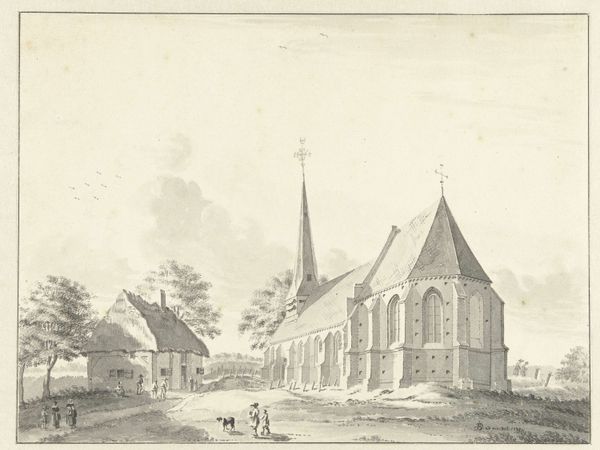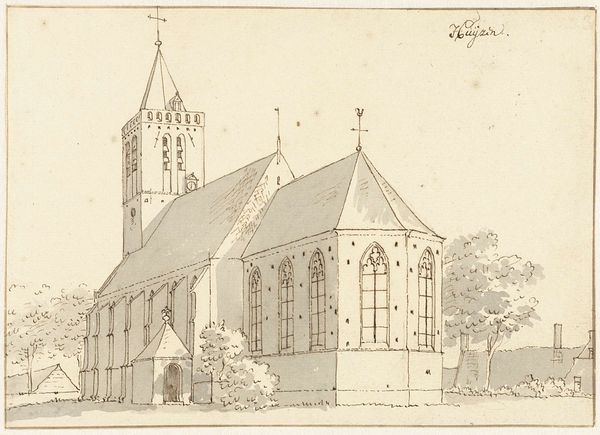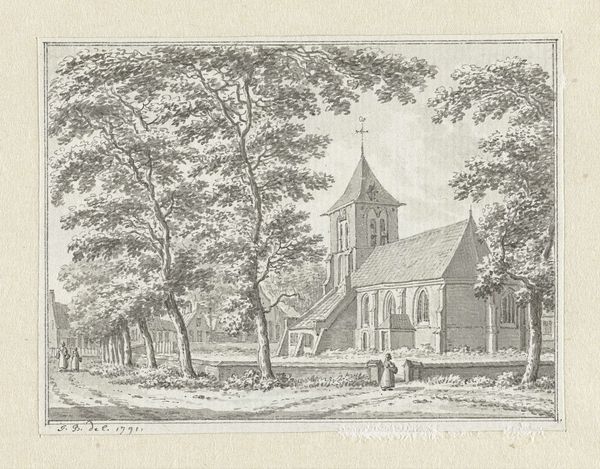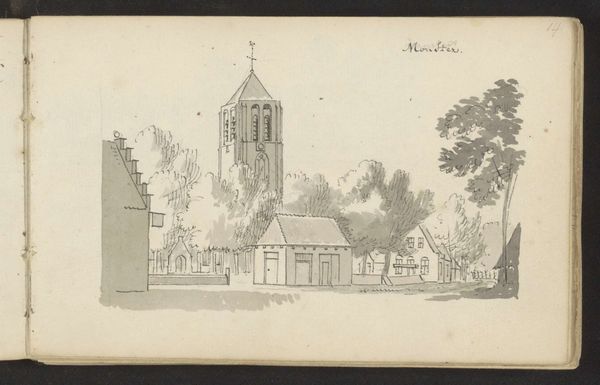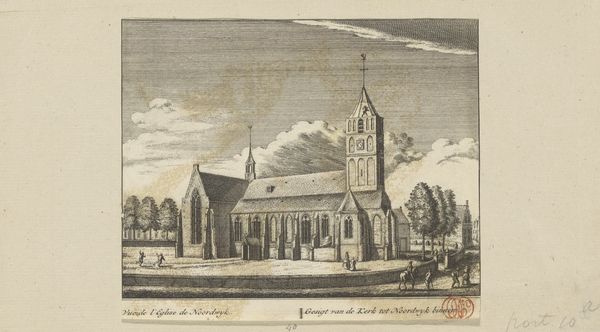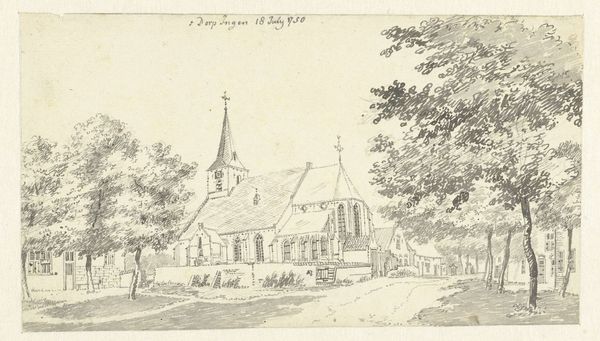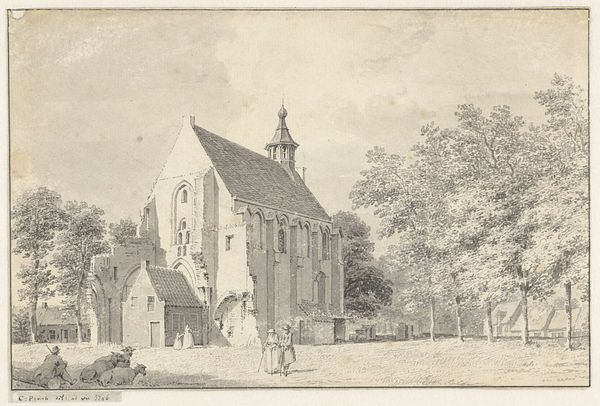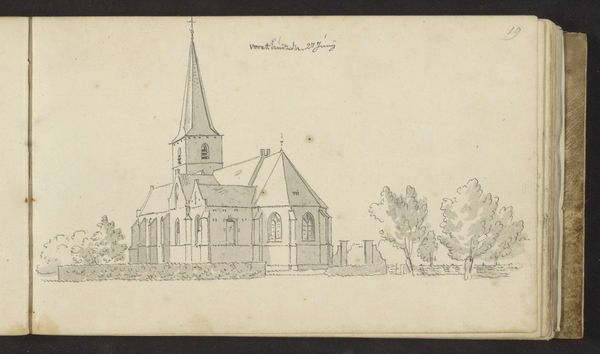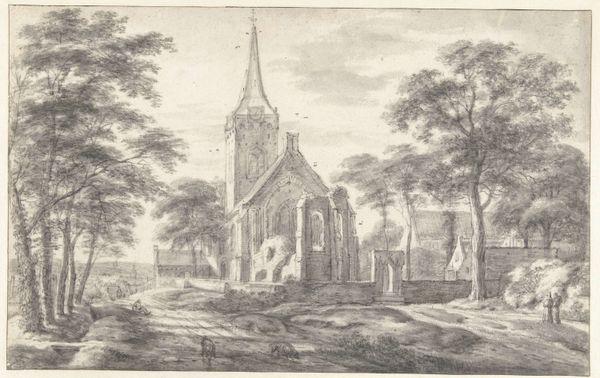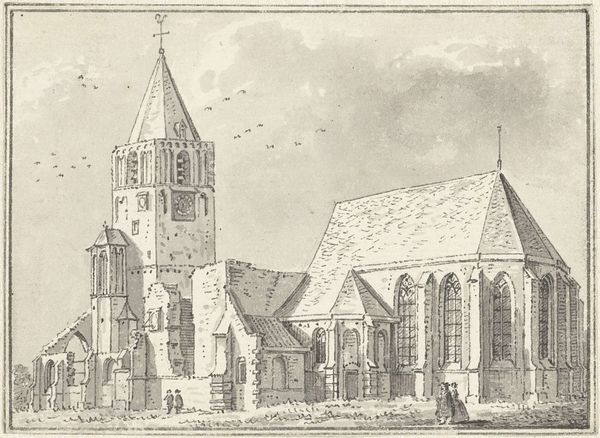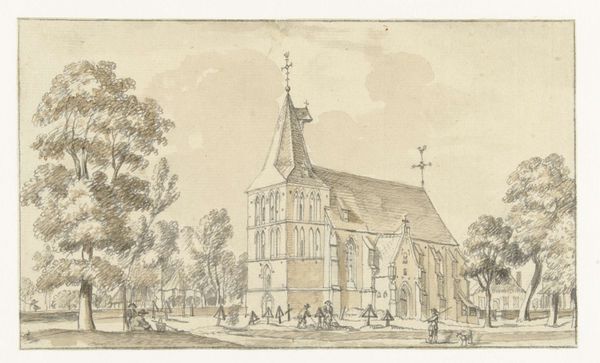
drawing, ink, architecture
#
drawing
#
dutch-golden-age
#
landscape
#
ink
#
architecture
#
realism
Dimensions: height 161 mm, width 239 mm
Copyright: Rijks Museum: Open Domain
Curator: What immediately strikes me about this piece is the quiet stillness, a serene pastoral feeling. Editor: That's a great starting point. What we have here is a drawing attributed to Jan de Beijer, titled "De kerk van Maartensdijk." It's likely created sometime between 1752 and 1758, and rendered in ink. Currently, it resides within the Rijksmuseum collection. Curator: The almost stark architectural details contrast wonderfully with the looser rendering of the foliage, don't you think? Almost a study in contrasts. Editor: Indeed. Look at the almost austere verticality of the church's spire juxtaposed against the more human elements: the buildings, figures on the road. What commentary might be being made on civic structure and religious authority at this time? Curator: It feels rooted in tradition, doesn’t it? The steeple dominating the skyline, a visual reminder of spiritual ascendancy, anchoring the town literally and figuratively. Its cross speaks volumes without needing any literal explications. Editor: Precisely. Consider how these architectural choices echo societal hierarchies of the era, where religion held immense social sway and cultural relevance, how class systems might influence even design of public spaces. How would one express individuality and resistance through similar depictions? Curator: Well, the surrounding landscape offers possibilities for subversive readings. Look at the delicate way he rendered it. It suggests nature as a nurturing force, perhaps subtly offering an alternative to strict institutional norms, an independent system. Editor: It reminds us that symbolism thrives in historical contexts, doesn't it? I am very interested in its ability to carry the emotional weight. A humble church can be at the nexus of a struggle between traditional authority and rising secular individualism, all encoded within its image. Curator: Absolutely. Jan de Beijer invites us not just to see a church, but to interpret how it functioned in the world. Editor: Yes, his lines have opened avenues into considering how a single structure symbolizes a community's relationship with its past and its evolving identity.
Comments
No comments
Be the first to comment and join the conversation on the ultimate creative platform.

